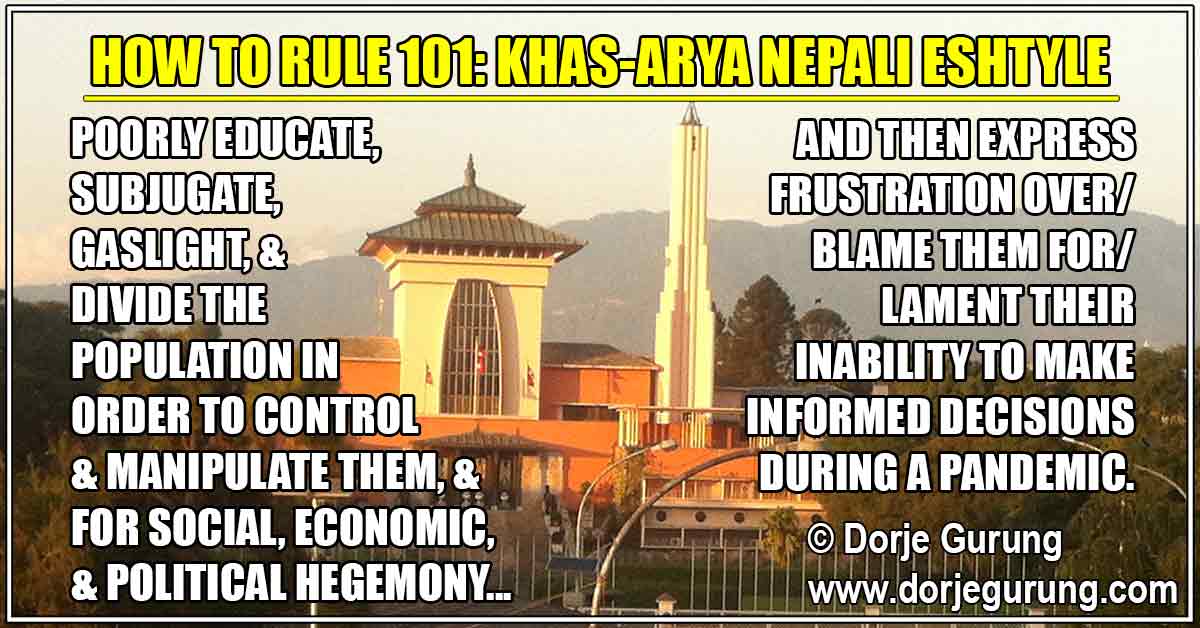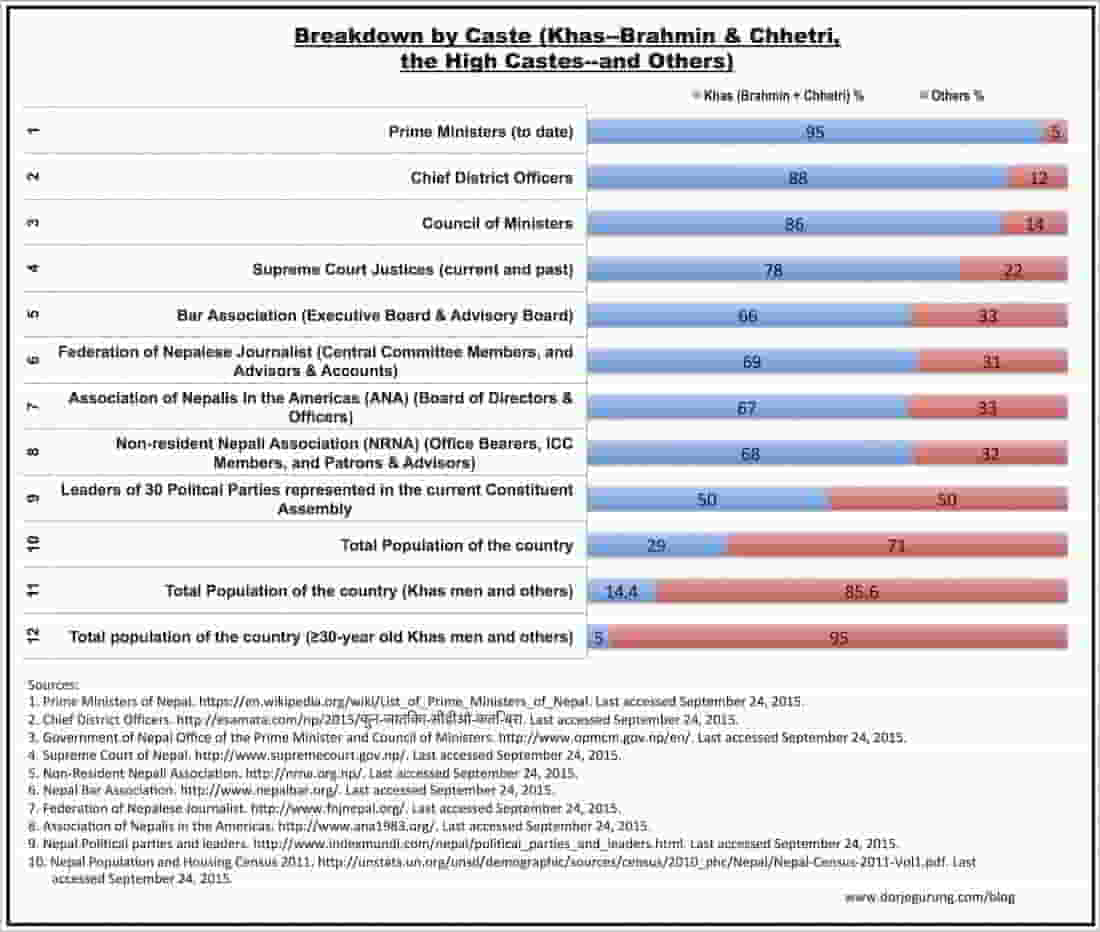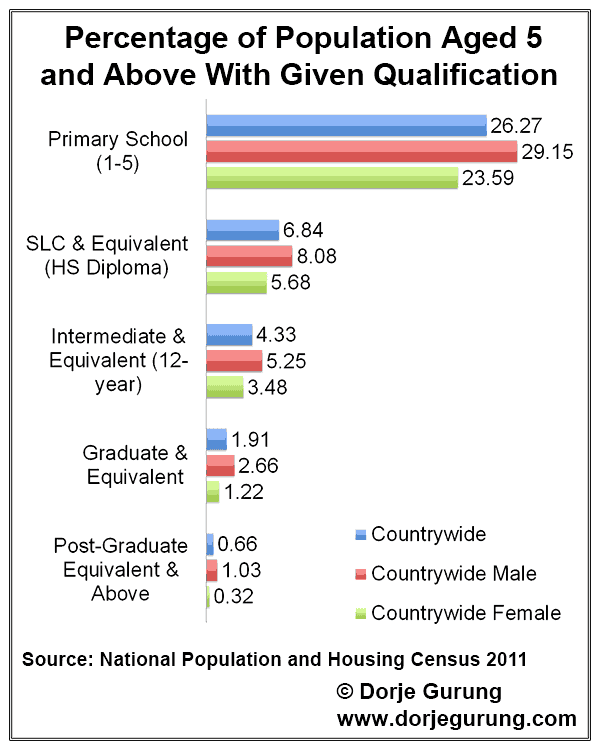This is a lesson. The title of this lesson is as follows: “How To Rule 101: Khas-Arya Nepali Eshtyle”…aka “How to rule with arrogance, ignorance, incompetence, and insidiousness.”
The most important thing to do is to ensure one’s social, economic, and political hegemony, and one’s caste supremacy.
To that end, one of the most important actions to take is to control all three branches of the government—the legislature, the executive, and the judiciary—and what’s supposed to be the fourth pillar of democracy: the media.
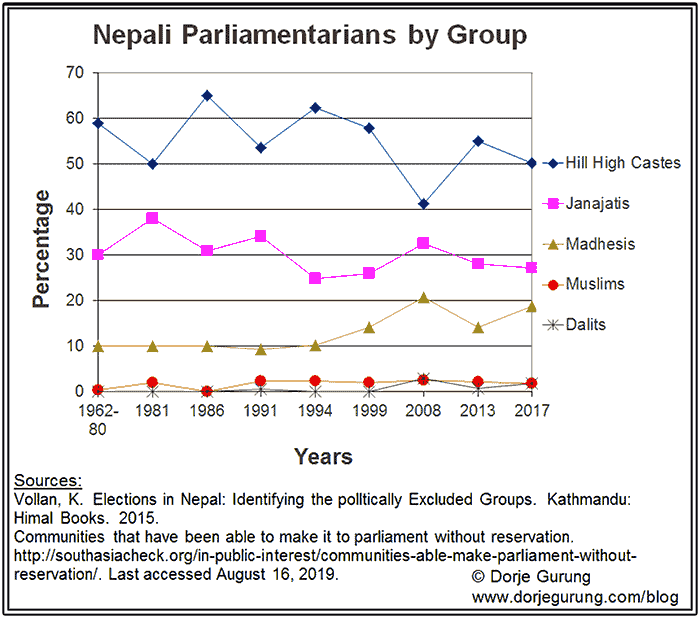
Another extremely important step to take to that end is to legislate and legitimize one’s caste supremacy. Write into the constitution — and incorporate into law — the highly bigoted and discriminatory social system: the caste system. (The High Castes in the image below are the Khas-Aryas.)
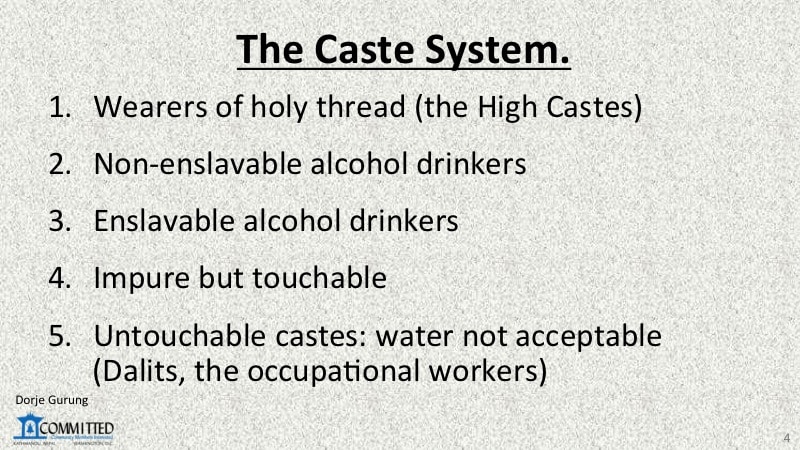
(Nepali society had been informally structured along it until then anyway, though not everyone in the country strictly followed it. The brilliance of the social system is that it not only divides up all the those who belong to the other four castes in such a way as to allow the High Castes to exploit them (“enslavable”), but also, as you can see, graded them. That essentially prevented the other castes from coming together, uniting, and raising a voice against the High Castes nor against their suppressive and oppressive systems, structures, and tactics etc.)
And then, over the course of ones rule, make sure the level of education of the rest of the population is extremely low. (Until about the middle of last century, there were NO educational institutions that non-High Castes could attend. Education and educational institutions were reserved for the High Castes.)
Even when (or if) you finally make education available to the masses, make sure it’s not readily accessible to everyone. (As of 2011 (see image below), after about six decades of introducing education for the masses, less than 10% in the country have 12 or more years of education, disproportionately high percentage likely are Khas-aryas as hinted at by the image showing the breakdown of 419 applications to 14 jobs.)
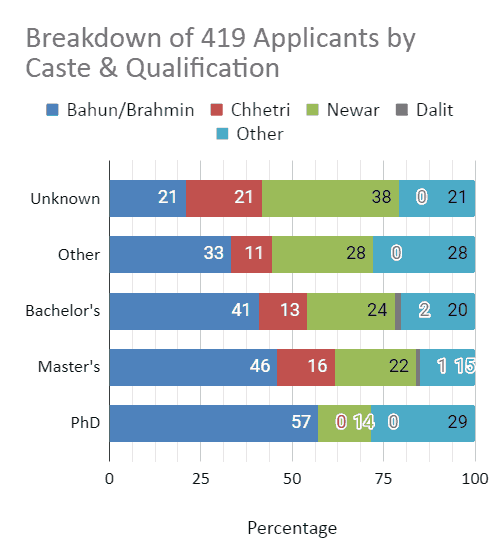
Next, ensure the quality of education provided — mostly by them (see image below) — is of abysmally poor (modeled after the obsolete and archaic Aryan-Sanskritic tradition) so that only a very small, near insignificant percentage of the population are able to understand and critically access the society and country etc.
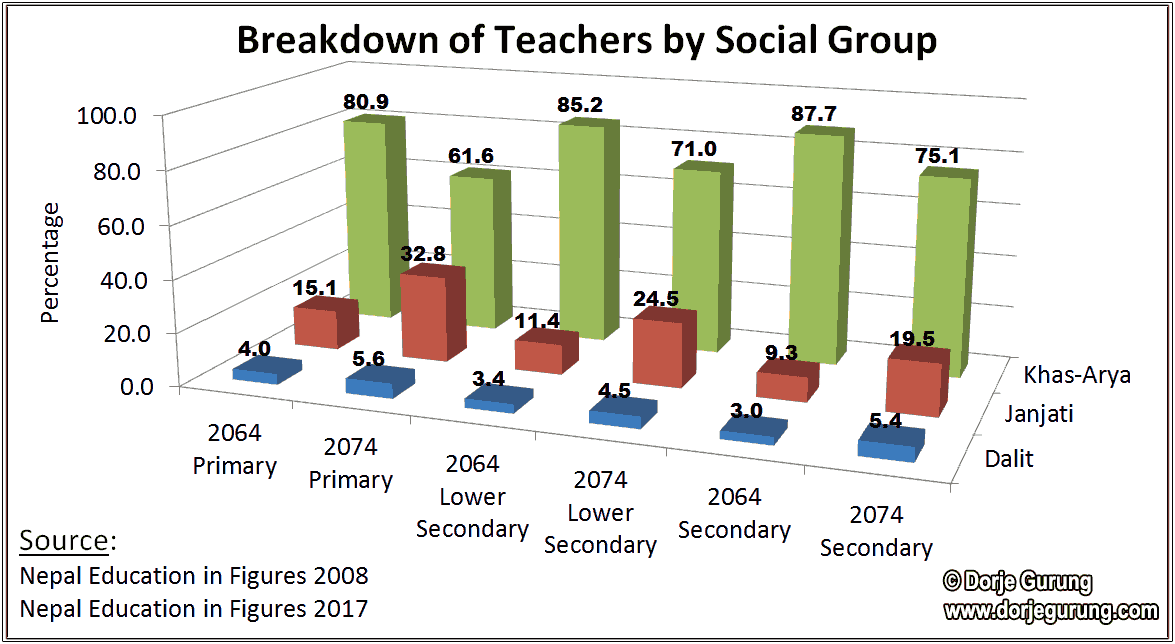
(The following video I made not long ago demonstrates how the obsolete and archaic Aryan-Sanskritic tradition is still alive in Nepal today.)
After legitimizing the caste system and structuring society along the highly graded and divisive system, make sure the rest of the population remains divided and distrustful of one another by supporting, enforcing, and thus maintaining it rigorously, employing social and legal recourses. Make the caste system such an integral part of pretty much all aspects of public life, and many aspects of even private life, that no one is able to escape its purview.
Oppress, subjugate, and exploit the people to reinforce ones privileged position in the society and exercise ones entitlements. Exploit the resources of the country for advancement of ones social group and for personal gain.
Suppress the cultures, heritages, languages, religions (spirituality), and identities of different peoples of the country (see image, for an example).
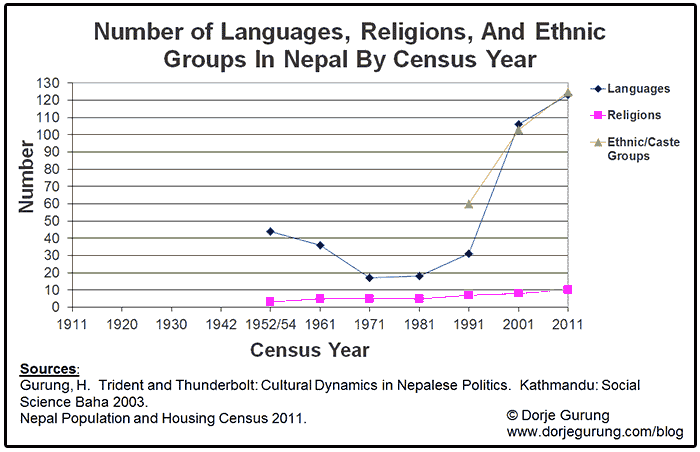
Should one or two of those from other groups dare to raise a voice to expose the structural inequality and/or inequity, and the realities of Nepali society, such as the immense cultural, linguistic, ethnic diversity etc., silence them by incarcerating them.
Misinform, disinform, and gaslight constantly as a matter of course and generally keep the population in the dark; and, thereby control and manipulate them as one wishes.
Do that for the entire almost three century history of the country, including during the last three decades of democracy!
And when news of an epidemic in China arrives (towards the end of 2019), continue along the same path of misinformation, disinformation, gaslighting, and corruption to line the pockets of oneself and those in one’s circle etc. When the epidemic transforms into a pandemic continue business…as usual.
And, finally, the ONE thing all of that has been leading up to…. When the coronavirus pandemic arrives in the country and when, through one’s utter incompetence and negligence, it progresses to Stage 3 and begins hurling towards Stage 4, wash one’s hands off of one’s responsibilities and incompetence. Place the burden of fighting the pandemic in the populations’ hands instead. Then, forget — or remember to forget — the entire history of one’s rule of the country and control of the population and, instead, express frustration over, blame them for, or lament their inability to make INFORMED DECISIONS!
And that, my friend, is how you rule…Khas-Arya Eshtyle! Yeah!
What to you think?
DISCLAIMER: If you notice a similarity in the way Nepali ruling class have ruled the country and the way your ruling class have done in yours…that was totally intentional! 😀 😀 😀
Additional Materials
- Setopati (March 12, 2020). कसरी गर्दै आएको छ हाम्रो राज्यसत्ताले ज्ञानमाथि नियन्त्रण? Article about how the State controlled education of the population from the Rana Oligarchs to the Shah autocrats. [Added on Sept. 2, 2022]

